Abstract
Thyroid function was evaluated clinically and biochemically in 12 patients with ischaemic heart disease receiving 200 mg oral amiodarone three times daily for periods up to 6 weeks. During drug administration, no patient developed clinical or laboratory evidence of hypothyroidism, but serum levels of T3 tended to fall and those of T4 increased but not to levels outside the normal range. Amiodarone produced a significant reduction in heart rate with prolongation of the QTc interval of the electrocardiogram without altering either the PR interval or the QRS duration. These effects of the drug were still present 4 weeks after cessation of treatment. In spite of the high iodine content, amiodarone does not, therefore, depress thyroid function to any important degree during chronic administration and its antianginal action does not appear to be caused by the production of generalized hypothyroidism.
Full text
PDF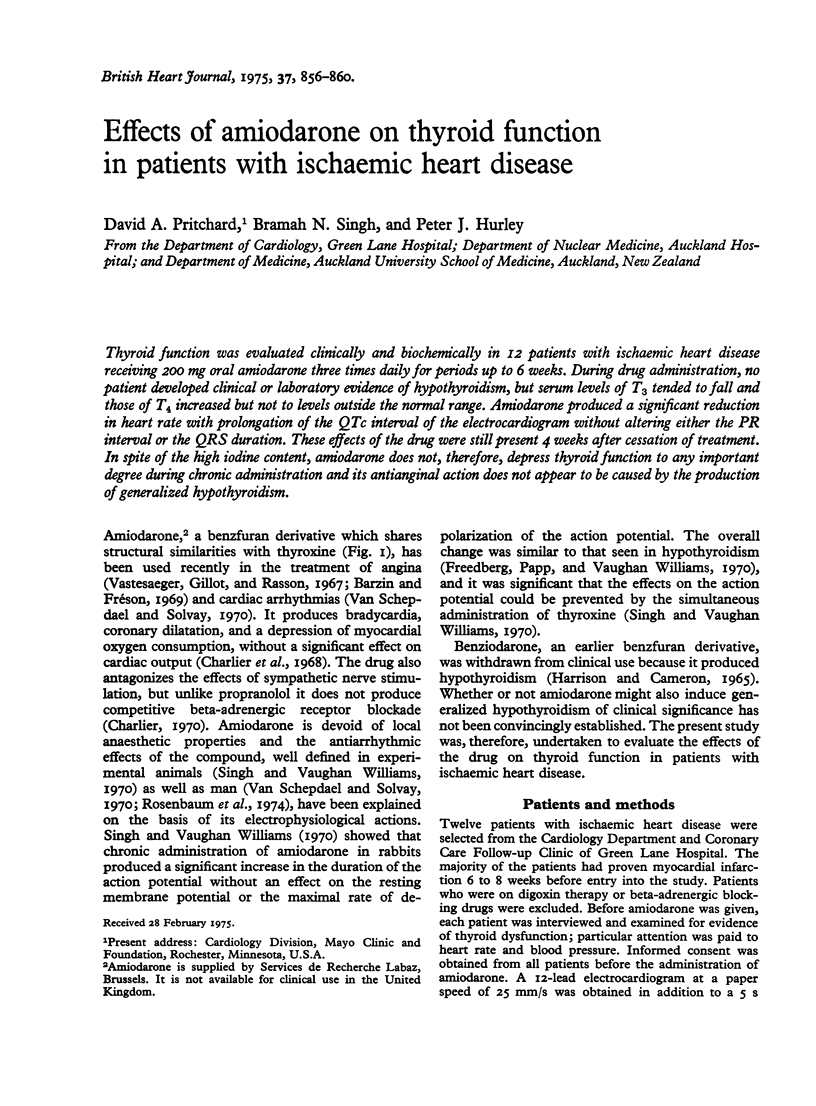
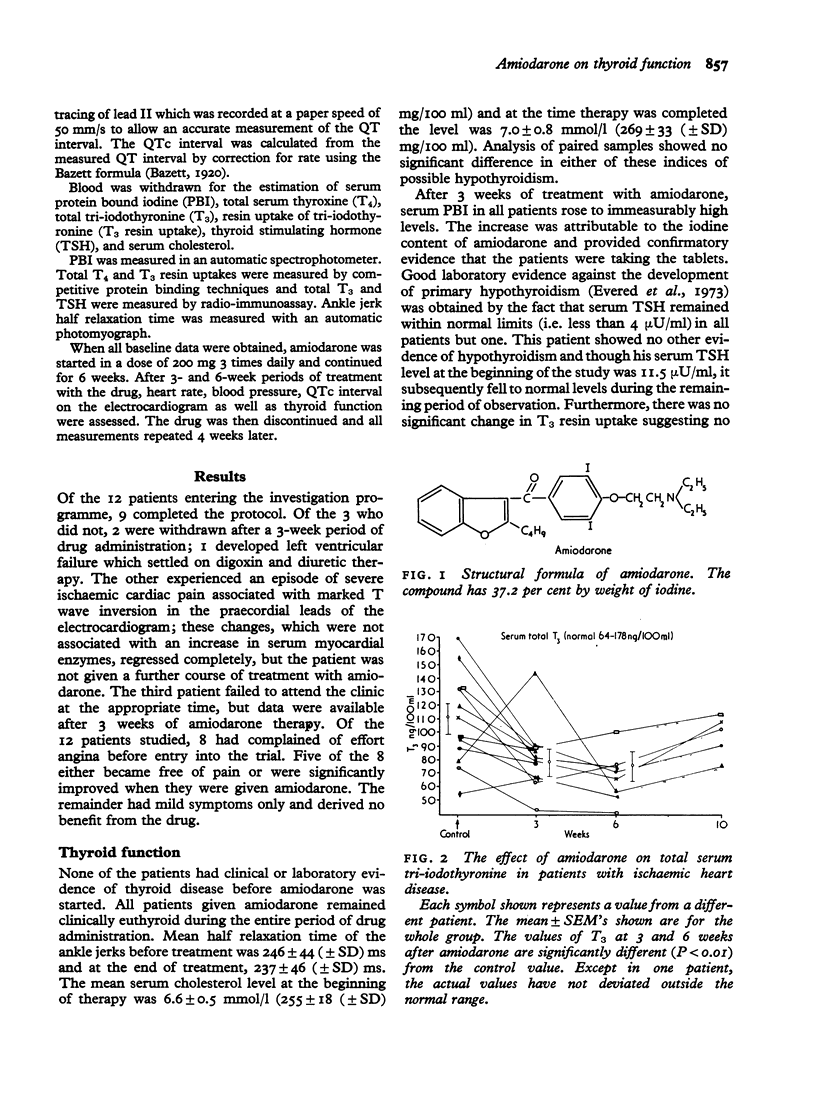
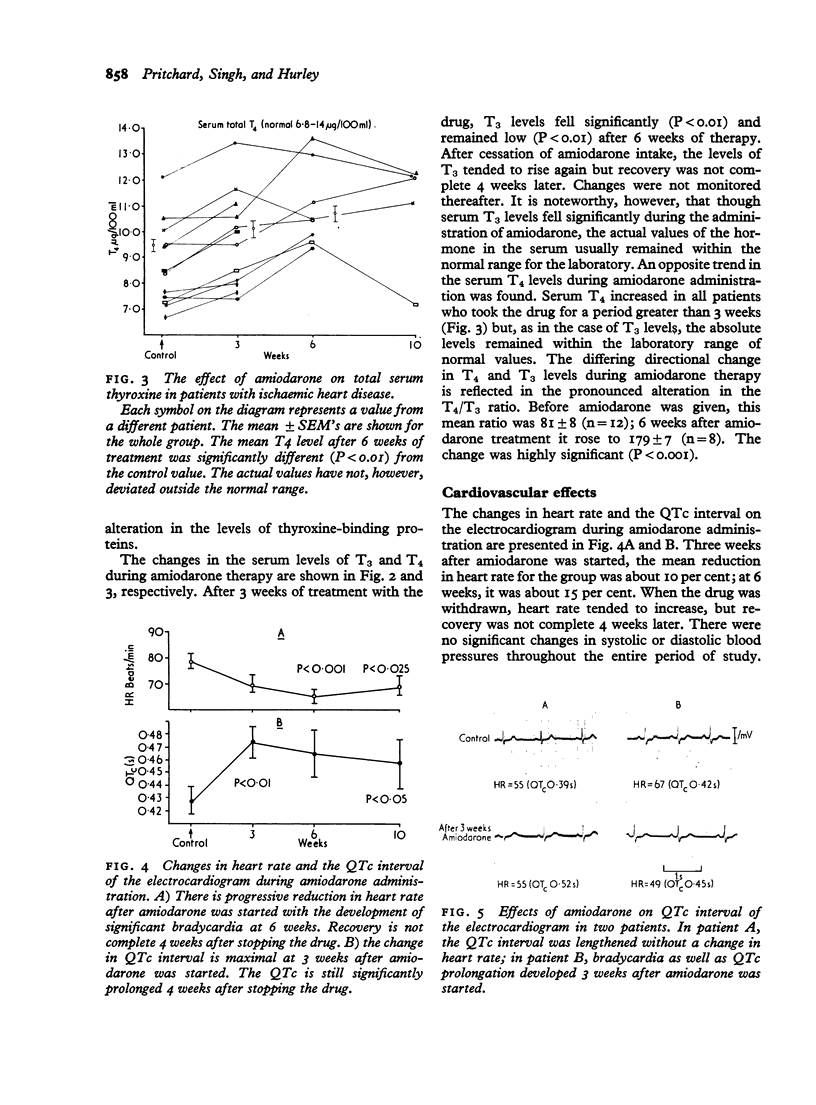
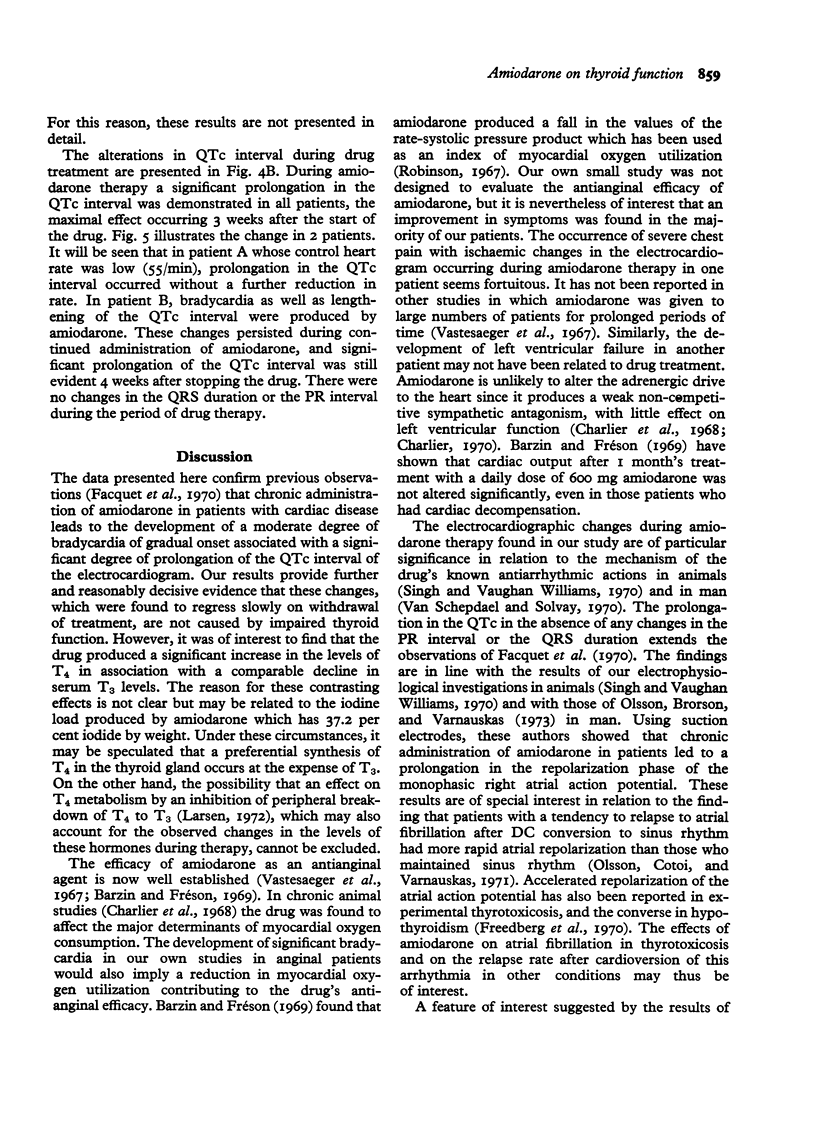
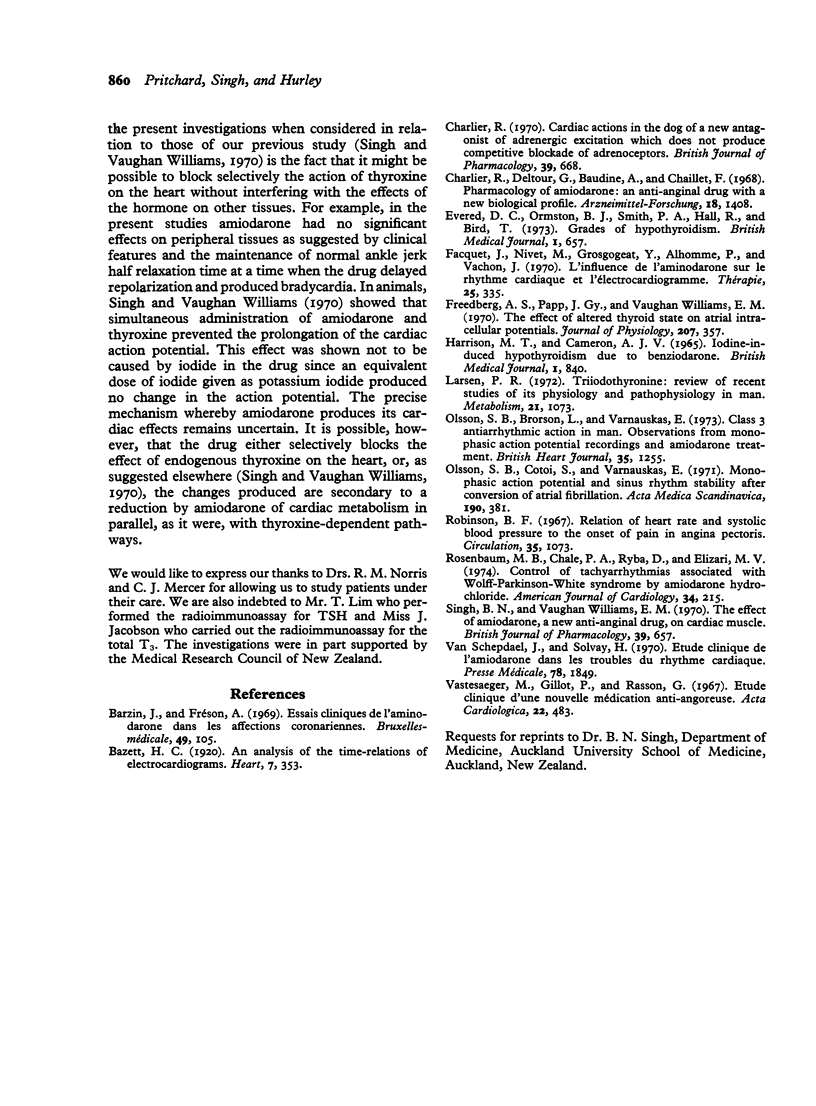
Images in this article
Selected References
These references are in PubMed. This may not be the complete list of references from this article.
- Charlier R. Cardiac actions in the dog of a new antagonist of adrenergic excitation which does not produce competitive blockade of adrenoceptors. Br J Pharmacol. 1970 Aug;39(4):668–674. doi: 10.1111/j.1476-5381.1970.tb09892.x. [DOI] [PMC free article] [PubMed] [Google Scholar]
- Charlier R., Deltour G., Baudine A., Chaillet F. Pharmacology of amiodarone, and anti-anginal drug with a new biological profile. Arzneimittelforschung. 1968 Nov;18(11):1408–1417. [PubMed] [Google Scholar]
- Facquet J., Nivet M., Grosgogeat Y., Alhomme P., Vachon J. L'influence de l'aminodarone sur le rythme cardiaque et l'électrocardiogramme. Therapie. 1970 Mar-Apr;25(2):335–341. [PubMed] [Google Scholar]
- Freedberg A. S., Papp J. G., Williams E. M. The effect of altered thyroid state on atrial intracellular potentials. J Physiol. 1970 Apr;207(2):357–369. doi: 10.1113/jphysiol.1970.sp009066. [DOI] [PMC free article] [PubMed] [Google Scholar]
- Larsen P. R. Triiodothyronine: review of recent studies of its physiology and pathophysiology in man. Metabolism. 1972 Nov;21(11):1073–1092. doi: 10.1016/0026-0495(72)90038-8. [DOI] [PubMed] [Google Scholar]
- Olsson S. B., Brorson L., Varnauskas E. Class 3 antiarrhythmic action in man. Observations from monophasic action potential recordings and amiodarone treatment. Br Heart J. 1973 Dec;35(12):1255–1259. doi: 10.1136/hrt.35.12.1255. [DOI] [PMC free article] [PubMed] [Google Scholar]
- Olsson S. B., Cotoi S., Varnauskas E. Monophasic action potential and sinus rhythm stability after conversion of atrial fibrillation. Acta Med Scand. 1971 Nov;190(5):381–387. doi: 10.1111/j.0954-6820.1971.tb07446.x. [DOI] [PubMed] [Google Scholar]
- Robinson B. F. Relation of heart rate and systolic blood pressure to the onset of pain in angina pectoris. Circulation. 1967 Jun;35(6):1073–1083. doi: 10.1161/01.cir.35.6.1073. [DOI] [PubMed] [Google Scholar]
- Rosenbaum M. B., Chiale P. A., Ryba D., Elizari M. V. Control of tachyarrhythmias associated with Wolff-Parkinson-White syndrome by amiodarone hydrochloride. Am J Cardiol. 1974 Aug;34(2):215–223. doi: 10.1016/0002-9149(74)90200-8. [DOI] [PubMed] [Google Scholar]
- Singh B. N., Vaughan Williams E. M. The effect of amiodarone, a new anti-anginal drug, on cardiac muscle. Br J Pharmacol. 1970 Aug;39(4):657–667. doi: 10.1111/j.1476-5381.1970.tb09891.x. [DOI] [PMC free article] [PubMed] [Google Scholar]



